Design no. 1971 Body no. 1317 7,338cc OHV aluminum V12 engine 165bhp at 3,000rpm 4-speed manual gearbox Independent front suspension with coil springs, semi-elliptic springs rear 4-wheel-brakes servo assisted *Unique coachwork *Only center gearshift Phantom III built *Two long term owners from new, in the present family since 1962 The Rolls-Royce Phantom III 'The most captious critic is obliged to admit that a Phantom III provides all that can be wished for in a large luxury motor-car. The comfort, silence and road-holding with really impressive acceleration and maximum speed made a combination of virtues which few cars of the time could equal.' - Anthony Bird, 'Rolls-Royce Motor Cars', 1964. Perhaps the most outstanding luxury car of the 1930s - certainly to have been built in the United Kingdom - was the Rolls-Royce Phantom III. Introduced in 1936, the 7,340cc V12-engined Phantom III succeeded the Phantom II, the six-cylinder engine of which was considered to be at the end of its development life. The choice of a V12 configuration was a logical one for Rolls-Royce, the company already having had considerable experience of manufacturing V12 aero engines such as that used in the record-breaking Supermarine S6B seaplane. No doubt another consideration was the need to match the multi-cylinder opposition, notably the V16 Cadillac and V12 Hispano-Suiza. A state-of-the-art design employing advanced materials and techniques such as 'skeleton' cylinder blocks with wet liners and aluminum alloy cylinder heads, the PIII V12 produced 165bhp in its debut form. The maximum output was subsequently raised to 180 brake horsepower, which was sufficient to propel later examples to 100mph, earlier models being capable of around 90. Its engine configuration aside, the Phantom III represents an important milestone in the history of Rolls-Royce cars, being the first with independent front suspension. A total of 727 had been manufactured when WW2 halted production, of which around 300 exist worldwide today. By the late 1930s, coachbuilding design had evolved considerably from the 'Roaring Twenties' days, and there were far fewer open sporting bodies built at all on Rolls-Royce automobiles. Gone were the days of lavish spartan 'Torpedos' that were built on the first two series of Phantom chassis. The fashion was slightly more austere and inclined toward two door 'Drophead Coupes' which offered fully open or fully enclosed road conditions, and were more orientated to the owner-driver market. At the top end, luxury cars were still fully coachbuilt operations though, and the buyer of a Rolls-Royce was certainly in a position to decide precisely how their car would look and for what purpose it would be built, and a few of those clientele commissioned full 'all weather' bodies on the V12 Phantom III chassis. The numbers built were certainly modest at the time, and survivors such as this are even fewer. The Motorcar Offered Among its higher brow and rare brethren, this is by any standards a rare automobile. It was ordered new by K.L. Bilbrough of Chislehurst in Kent, in the U.K., a wealthy gentleman who was by then the Chairman of the shipping and marine insurance business his father had founded in 1862. The story goes that its unique creation reflected Mr. Bilbrough's previous penchant for driving Packard motorcars, but when he elected to change for the latest model, he discovered to his dismay that the new car would not fit in his garage! At this point, two domestic companies took over the mantel, Rolls-Royce and Freestone and Webb. Stipulating that the car must not exceed 17 feet, 7 inches, even with its bumpers fitted, the coachwork was designed. Other intriguing specifics were required, in order to match the central gear-change lever that he was used to in his Packard, the Rolls-Royce was built in this way also, it being the sole example of this model so equipped. White faced instruments were required with black numerals and bezels, and they were to
Design no. 1971 Body no. 1317 7,338cc OHV aluminum V12 engine 165bhp at 3,000rpm 4-speed manual gearbox Independent front suspension with coil springs, semi-elliptic springs rear 4-wheel-brakes servo assisted *Unique coachwork *Only center gearshift Phantom III built *Two long term owners from new, in the present family since 1962 The Rolls-Royce Phantom III 'The most captious critic is obliged to admit that a Phantom III provides all that can be wished for in a large luxury motor-car. The comfort, silence and road-holding with really impressive acceleration and maximum speed made a combination of virtues which few cars of the time could equal.' - Anthony Bird, 'Rolls-Royce Motor Cars', 1964. Perhaps the most outstanding luxury car of the 1930s - certainly to have been built in the United Kingdom - was the Rolls-Royce Phantom III. Introduced in 1936, the 7,340cc V12-engined Phantom III succeeded the Phantom II, the six-cylinder engine of which was considered to be at the end of its development life. The choice of a V12 configuration was a logical one for Rolls-Royce, the company already having had considerable experience of manufacturing V12 aero engines such as that used in the record-breaking Supermarine S6B seaplane. No doubt another consideration was the need to match the multi-cylinder opposition, notably the V16 Cadillac and V12 Hispano-Suiza. A state-of-the-art design employing advanced materials and techniques such as 'skeleton' cylinder blocks with wet liners and aluminum alloy cylinder heads, the PIII V12 produced 165bhp in its debut form. The maximum output was subsequently raised to 180 brake horsepower, which was sufficient to propel later examples to 100mph, earlier models being capable of around 90. Its engine configuration aside, the Phantom III represents an important milestone in the history of Rolls-Royce cars, being the first with independent front suspension. A total of 727 had been manufactured when WW2 halted production, of which around 300 exist worldwide today. By the late 1930s, coachbuilding design had evolved considerably from the 'Roaring Twenties' days, and there were far fewer open sporting bodies built at all on Rolls-Royce automobiles. Gone were the days of lavish spartan 'Torpedos' that were built on the first two series of Phantom chassis. The fashion was slightly more austere and inclined toward two door 'Drophead Coupes' which offered fully open or fully enclosed road conditions, and were more orientated to the owner-driver market. At the top end, luxury cars were still fully coachbuilt operations though, and the buyer of a Rolls-Royce was certainly in a position to decide precisely how their car would look and for what purpose it would be built, and a few of those clientele commissioned full 'all weather' bodies on the V12 Phantom III chassis. The numbers built were certainly modest at the time, and survivors such as this are even fewer. The Motorcar Offered Among its higher brow and rare brethren, this is by any standards a rare automobile. It was ordered new by K.L. Bilbrough of Chislehurst in Kent, in the U.K., a wealthy gentleman who was by then the Chairman of the shipping and marine insurance business his father had founded in 1862. The story goes that its unique creation reflected Mr. Bilbrough's previous penchant for driving Packard motorcars, but when he elected to change for the latest model, he discovered to his dismay that the new car would not fit in his garage! At this point, two domestic companies took over the mantel, Rolls-Royce and Freestone and Webb. Stipulating that the car must not exceed 17 feet, 7 inches, even with its bumpers fitted, the coachwork was designed. Other intriguing specifics were required, in order to match the central gear-change lever that he was used to in his Packard, the Rolls-Royce was built in this way also, it being the sole example of this model so equipped. White faced instruments were required with black numerals and bezels, and they were to







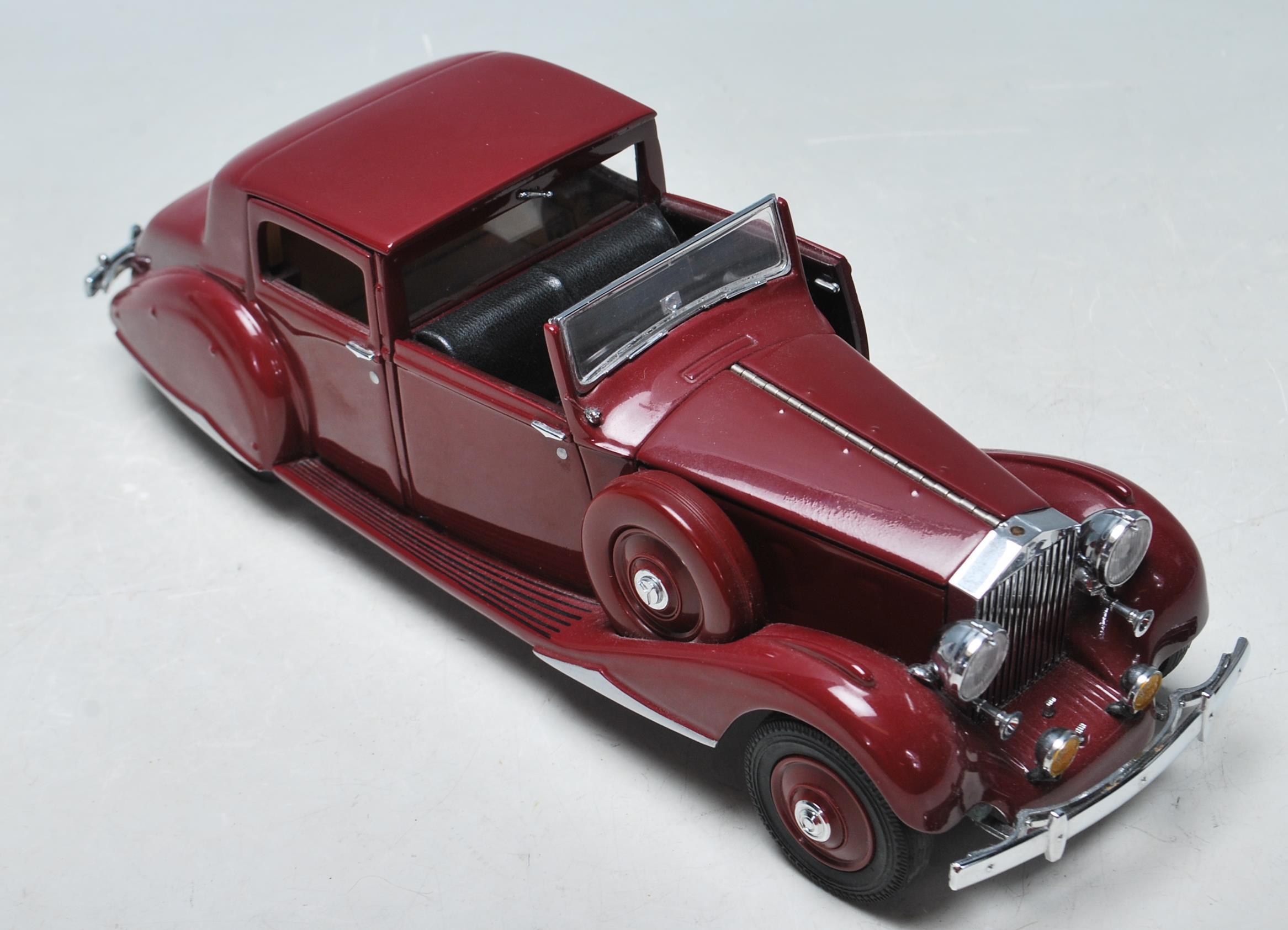
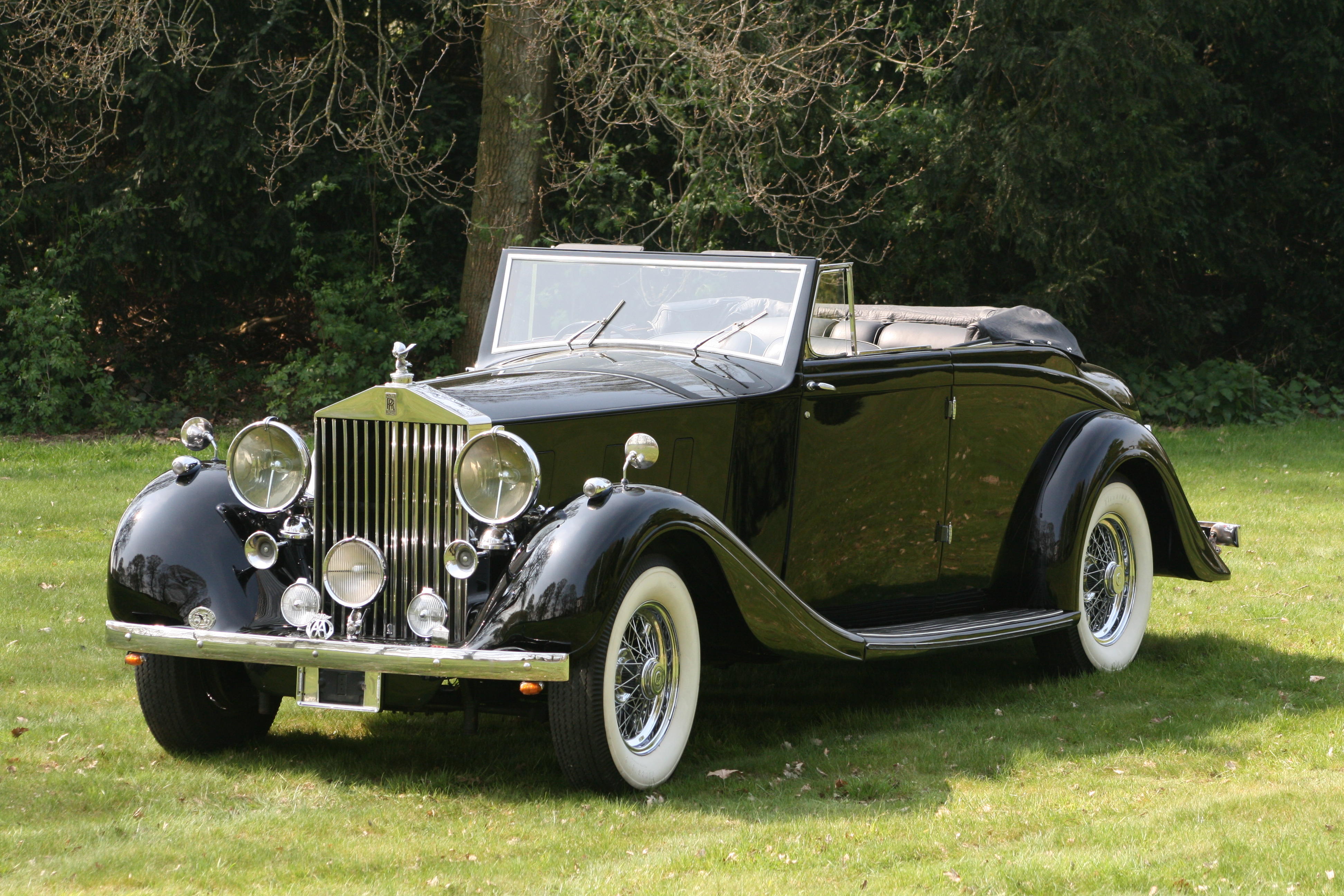
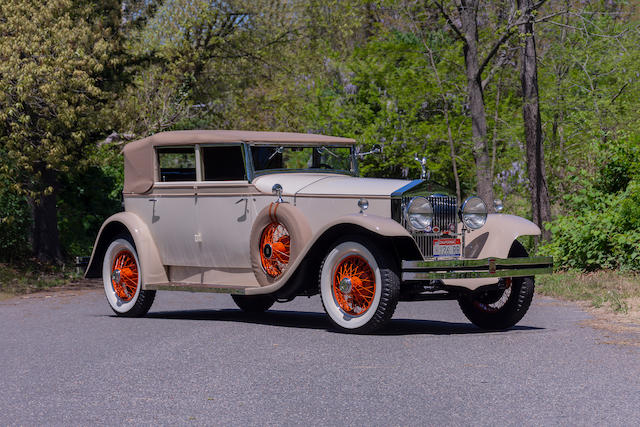

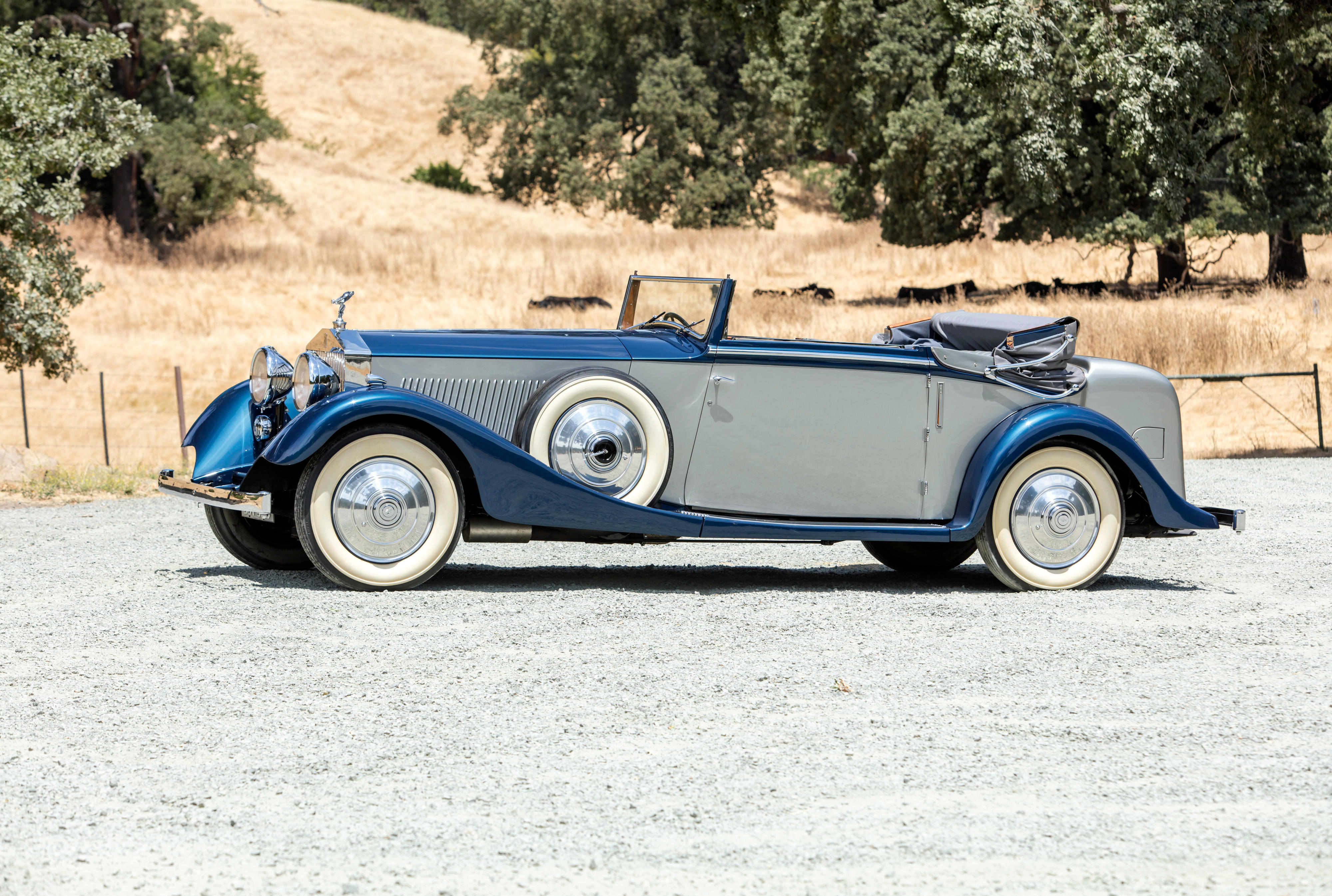


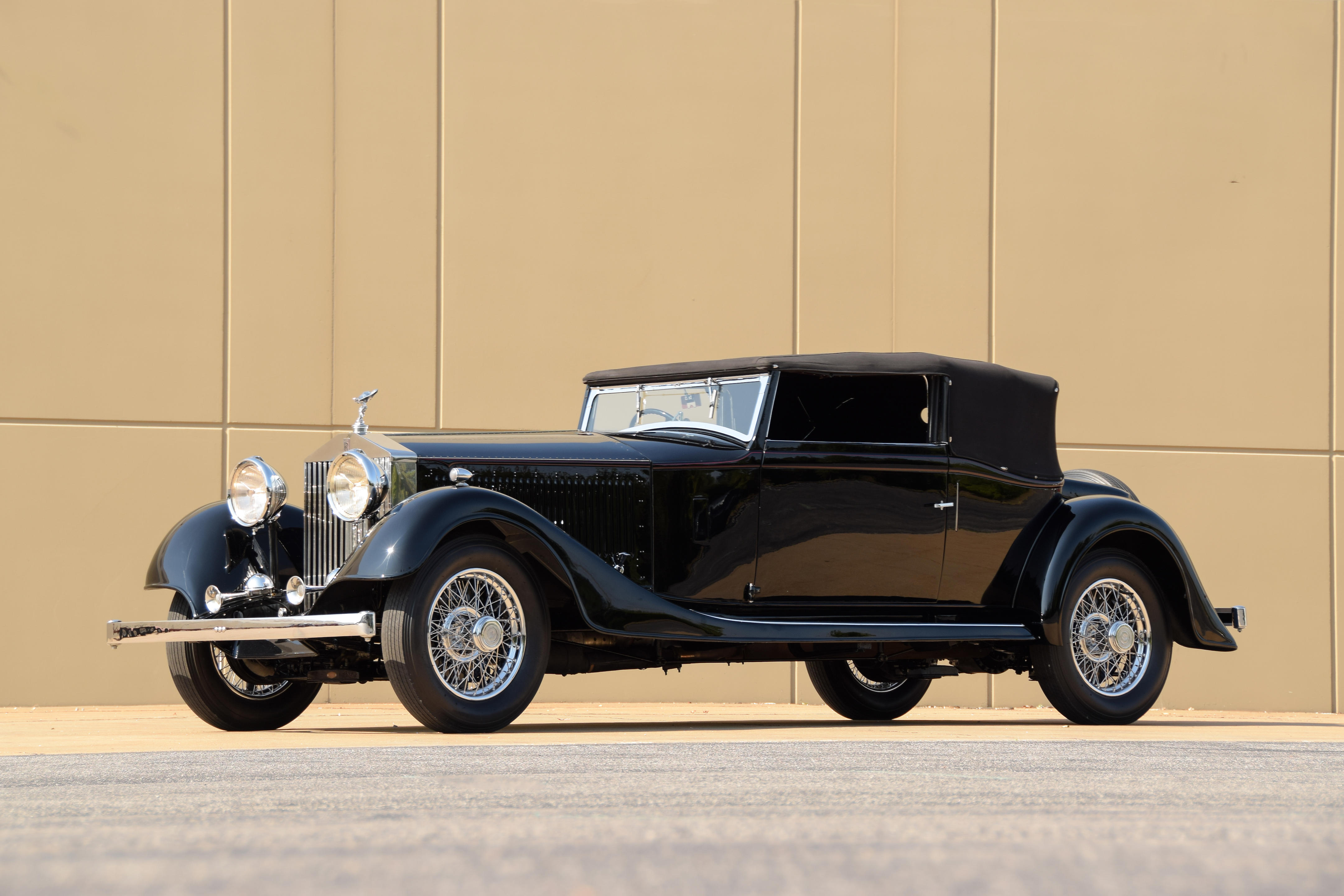
Testen Sie LotSearch und seine Premium-Features 7 Tage - ohne Kosten!
Lassen Sie sich automatisch über neue Objekte in kommenden Auktionen benachrichtigen.
Suchauftrag anlegen